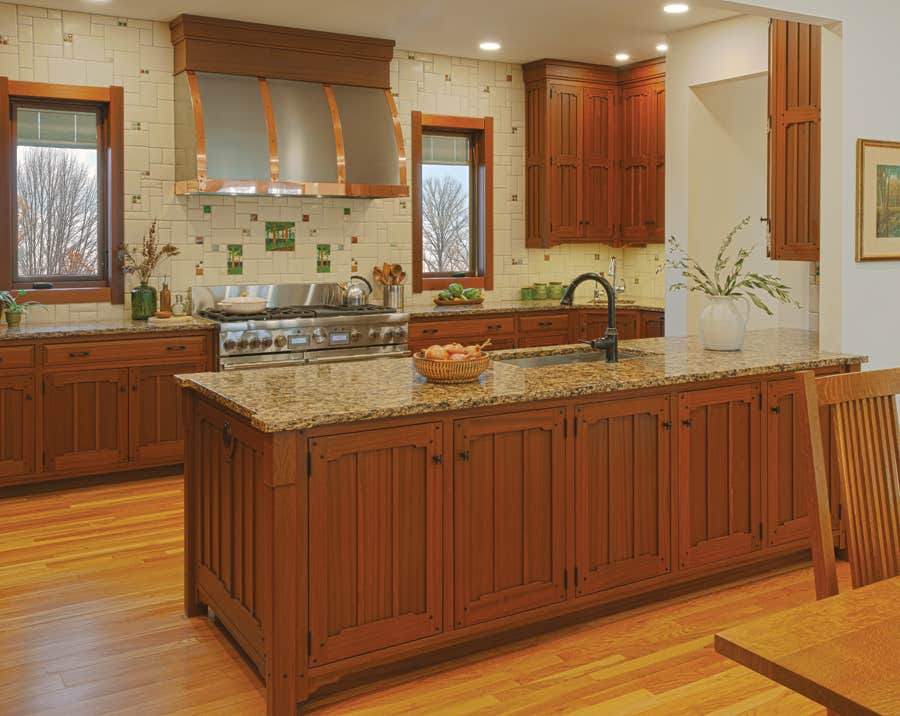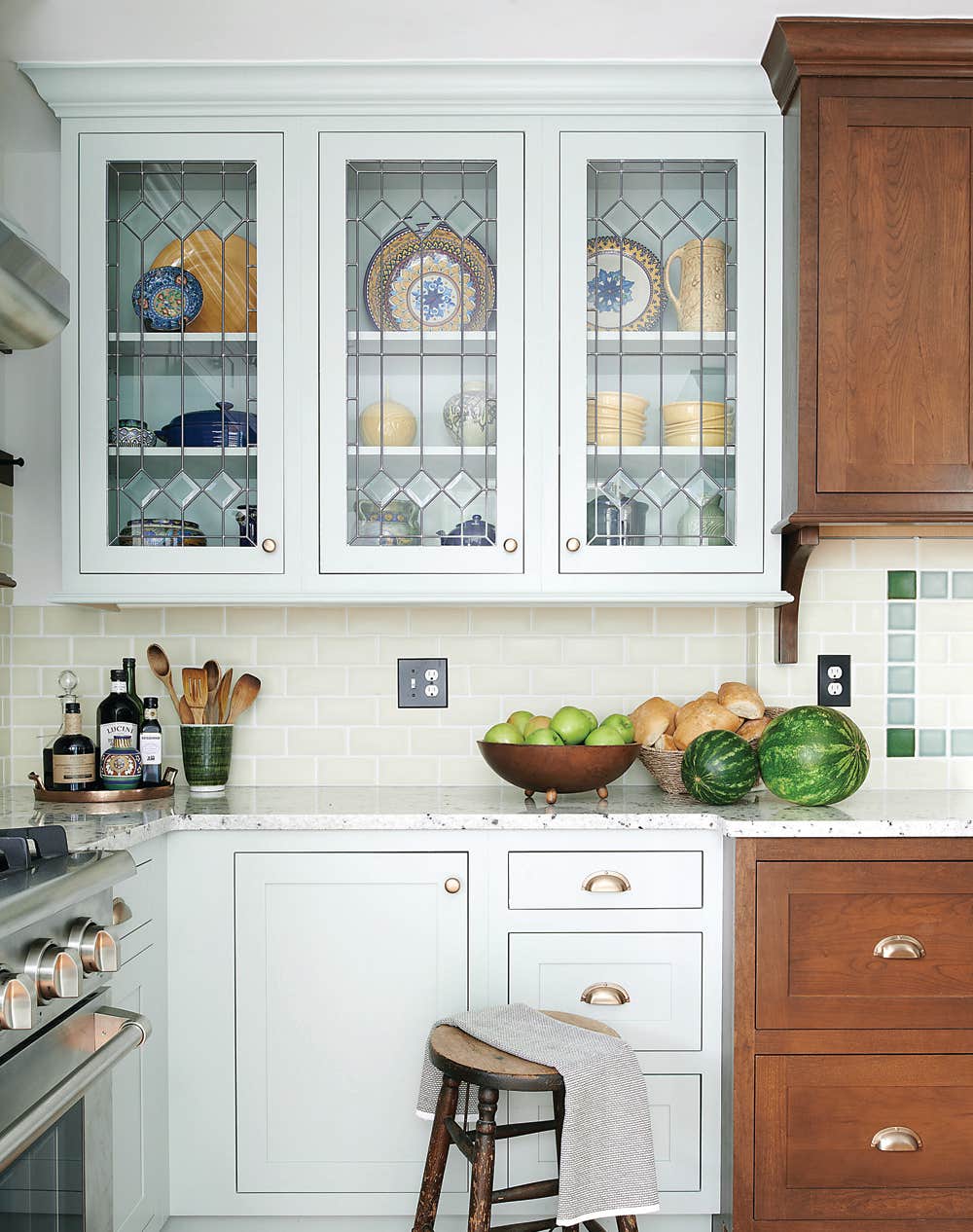Revival Kitchens, Baths & Tile
Explore various Revival kitchen, bathroom and tile styles.
By now you may be aware that original kitchens of the Arts & Crafts period (1901–1925) were very utilitarian: smallish spaces outfitted with white tile and painted cabinets. Many of today’s owners have taken to heart the advice to “keep it simple” when remodeling, especially if the kitchen remains in the original footprint. It’s also the thrifty approach.
Other renovators prefer not to reproduce a period kitchen. It makes sense: The room is no longer a utility space behind closed doors, but rather the heart of the home, a place to welcome guests. Today’s kitchens may have a second prep area, a wet bar, a household office or mudroom, a breakfast alcove, even a TV room. “We say we want a ‘vintage kitchen,’” says decorative-arts historian Dan Cooper, “but we’d be traumatized by ice deliveries and a coal stove.”
So, if you are adding on or extensively remodeling—or building a revival house—you may choose to design a more “finished” kitchen. Arts & Crafts revival kitchens often have furniture-quality cabinets accented by art tile, handsome light fixtures, forged and cast hardware, and decorative textiles.
Period Style
“Today’s period-style kitchens can be literal, or they can be interpretive,” Cooper explains. “The former camp tries to disguise as much 21st-century technology as possible.”
Dishwashers and fridges hide behind custom cabinets; the microwave oven is tucked into a pantry; the stove has retro styling. Cooper explains that a more interpretive approach acknowledges the presence of modern appliances and light ing, but within a room that incorporates period materials (Douglas fir, soapstone) and detailing (window trim, brackets). There’s a fair amount of crossover; you might install a modern cooktop in a granite counter, but diminish the modernity by adding a hand-hammered copper vent hood right out of the period.
Watch the scale; before you assume you need to add on, try borrowing space from a back hall or pantry and keep to the original footprint. Any additions should be proportionate to the house; sometimes just a bump-out of a few feet, with windows for extra light, is enough.
The room will have a more timeless look if details are borrowed from other historic kitchens, or from the pantry or back hall—rather than copied from high-style elements in the dining room. (Remember, too, that a simple kitchen is easier to clean!) Consider using several different counter surfaces, which is historical as well as practical. All of these tips work for bungalows, American Foursquares, Tudors, and the era’s Colonial Revival homes.
Patricia Poore is Editor-in-chief of Old House Journal and Arts & Crafts Homes, as well as editorial director at Active Interest Media’s Home Group, overseeing New Old House, Traditional Building, and special-interest publications.
Poore joined Old House Journal when it was a Brooklyn-brownstoner newsletter in the late 1970s. She became owner and publisher and, except for the years 2002–2013, has been its editor. Poore founded the magazines Old-House Interiors (1995–2013) and Early Homes (2004–2017); their content is now available online and folded into Old-House Journal’s wider coverage. Poore also created GARBAGE magazine (1989–1994), the first unaffiliated environmental consumer magazine.
Poore has participated, hands-on, in several restorations, including her own homes: a 1911 brownstone in Park Slope, Brooklyn, and a 1904 Tudor–Shingle Style house in Gloucester, Massachusetts, where she brought up her boys and their wonderful dogs.








